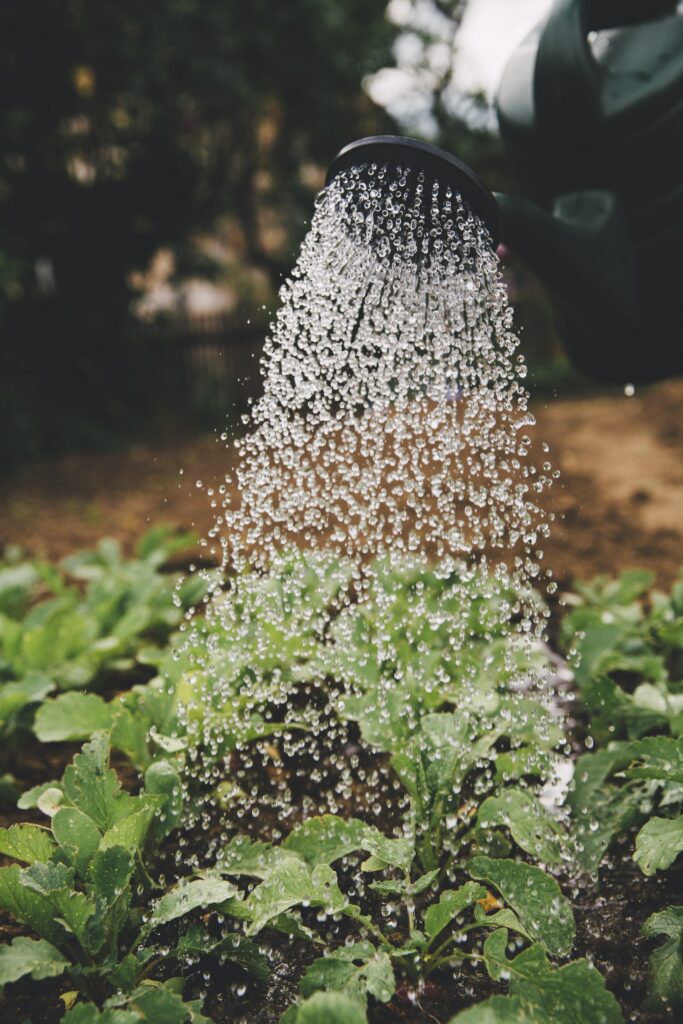In this article, we will guide you through the process of draining sediment from your water heater, offering detailed step-by-step instructions to help you maintain the efficiency and longevity of your appliance. With regular maintenance, sediment buildup can be prevented, ensuring that your water heater continues to provide you with hot water when you need it. By following this guide, you can protect your investment and enjoy the benefits of a well-maintained water heater. So let’s get started and learn how to effectively remove sediment from your water heater!



This image is property of images.unsplash.com.
Understanding The Importance of Draining Sediment From Your Water Heater
Water heater sediment refers to the accumulation of minerals and other debris that settle at the bottom of your water heater tank over time. This sediment can come from various sources, including minerals in the water supply and the corrosion of the tank. While some sediment buildup is inevitable, neglecting to drain it regularly can have negative consequences for your water heater’s performance and lifespan.
Explaining Water Heater Sediment
Water heater sediment is primarily composed of minerals such as calcium, magnesium, and sediment that can enter the tank through the water supply. As the water heater heats the water, these minerals begin to settle at the bottom of the tank. Over time, the sediment can build up and create a layer of debris. This sediment layer can hinder heat transfer, reduce efficiency, and even lead to damage.
Detailing the Negative Impacts of Sediment
The presence of sediment in your water heater can lead to several problems. Firstly, it can reduce the overall efficiency of the tank by acting as an insulator, preventing heat from transferring effectively. This can result in the water taking longer to heat up and potentially increased energy consumption. Additionally, sediment can cause overheating and premature wear and tear on the heating elements and the tank itself. It can also increase the risk of corrosion, leading to leaks and other malfunctions.



This image is property of images.unsplash.com.
Why Regular Draining is Vital for a Water Heater’s Longevity
Regularly draining sediment from your water heater is crucial to maintain its longevity and performance. By flushing out the accumulated sediment, you can prevent the negative impacts mentioned earlier. Regular draining ensures that the tank remains clean and free from debris, allowing for efficient heat transfer and reducing the risk of damage. It also helps to maintain water quality, as sediment buildup can sometimes affect the taste and odor of the water.
Identifying When Your Water Heater Might Have Sediment Buildup
It is important to be able to recognize the signs indicating sediment buildup in your water heater. By doing so, you can take appropriate action and prevent any further damage. Some common signs include reduced hot water supply, fluctuating water temperatures, strange noises coming from the tank, and increased energy usage. If you notice any of these signs, it may be an indication of sediment buildup, and it is advisable to begin the draining process.
The frequency of sediment accumulation can vary depending on factors such as water quality, water usage, and the type of water heater. Generally, it is recommended to drain your water heater at least once a year. However, homes in regions with hard water, which contains a high mineral content, may require more frequent draining. Hard water can accelerate sediment buildup, making it necessary to drain the water heater every six months or even more frequently.
Special Considerations for Regions with Hard Water
Regions with hard water experience a higher concentration of minerals, making sediment buildup more prevalent. If you live in an area with hard water, it is particularly important to stay vigilant and perform regular water heater maintenance. Consider installing a water softener or using other effective water softening methods to help minimize the amount of sediment that enters your water heater. These methods involve removing or neutralizing the minerals in the water, reducing the chances of sediment buildup and prolonging the lifespan of your water heater.



This image is property of images.unsplash.com.
Different Types of Water Heaters and Their Sediment Draining Procedure
There are various types of water heaters, and each type requires specific procedures for draining sediment effectively.
Explaining the Different Types of Water Heaters
-
Conventional Storage Tank Water Heaters: These are the most common types of water heaters found in homes. They consist of a tank where water is heated and stored for use. Draining sediment from a conventional storage tank water heater involves a straightforward process.
-
Tankless Water Heaters: Unlike conventional storage tank water heaters, tankless water heaters heat water on demand, eliminating the need for a storage tank. While the maintenance requirements for tankless water heaters differ, they still require periodic cleaning to remove sediment and maintain optimal performance.
Specific Requirements for Each Type of Water Heater
For conventional storage tank water heaters, the draining process typically involves turning off the power source and water supply, connecting a hose to the drain valve, and draining the tank by opening the valve. Flushing the system by turning on the cold water supply briefly is also recommended. Once the tank is drained, refill it with water, making sure to turn off any open valves and restore power to the water heater.
On the other hand, tankless water heaters may require additional steps or different procedures for sediment removal. It is essential to consult the manufacturer’s instructions or seek professional guidance to ensure you follow the correct draining procedure specific to your tankless water heater model.
Special Considerations for Tankless Water Heaters
When draining a tankless water heater, it is crucial to deactivate the power source and isolate the water supply. The specific procedure may vary depending on the unit and manufacturer. Some tankless water heaters have a self-flushing feature that automatically removes sediment, while others may require manual cleaning. Either way, it is important to follow the manufacturer’s instructions to maintain the efficiency and lifespan of your tankless water heater.
Gathering Required Tools and Precautions
Before beginning the sediment draining process, ensure that you have the necessary tools and take the required safety precautions.
Listing the Necessary Tools
To drain sediment from a water heater, you will need the following tools:
- Garden hose or a hose suitable for hot water.
- Flathead screwdriver or pliers to open the drain valve.
- A bucket or a drain pan to collect the discharged water.
- Towels or rags for cleaning up any spills or leakage.
Safety Measures to Consider
Safety should always be a top priority when working with a water heater. Here are some safety measures to consider before starting:
- Ensure the power source to the water heater is turned off to prevent electric shock.
- Allow the water inside the tank to cool before draining to avoid scalding injuries.
- Wear protective gloves and eye goggles to protect yourself from hot water and potential splashes.
- Make sure the area around the water heater is well-ventilated to prevent the accumulation of harmful gases like carbon monoxide.
Outlining Protective Clothing and Equipment
In addition to safety measures, it is advisable to wear appropriate protective clothing, such as long sleeves and pants, as well as closed-toe shoes, to minimize any potential risks during the sediment draining process. Consider using knee pads or a kneeling mat for added comfort while working on the floor. Remember to keep a fire extinguisher nearby in case of emergencies.
The Step-by-Step Process of Water Heater Draining
Now that you have gathered the necessary tools and taken the safety precautions, here is a step-by-step guide to draining sediment from your water heater effectively.
Step One: Turning Off Power Source and Water Supply
Before draining the water heater, switch off the power source to safeguard against electrical accidents. For electric water heaters, turn off the designated circuit breaker at the electrical panel. For gas water heaters, locate the gas supply valve and turn it off.
Next, shut off the water supply to the tank by closing the cold water supply valve. This valve is usually located near the top of the unit.
Step Two: Connecting a Hose to the Drain Valve
Attach a garden hose or a suitable hose to the drain valve, which is typically located near the bottom of the water heater. Ensure the other end of the hose is securely connected to a proper drainage point, such as a floor drain, a bucket, or an outdoor area where the water can safely disperse.
Step Three: Draining the Tank
With the hose properly connected and the drainage point established, slowly open the drain valve using a flathead screwdriver or pliers. Be cautious as hot water and sediment will start to flow into the hose and the drainage point. Allow the water to drain completely.
Step Four: Flushing the System
After the tank is drained, close the drain valve and detach the hose. Turn on the cold water supply valve for a few minutes, allowing fresh water to flush through the tank. This helps remove any remaining fine sediment particles that may have been left behind.
Step Five: Refilling the Tank
Once the water has run clear, close the cold water supply valve. Remove any accumulated sediment and debris from the drain valve and close it tightly. Now, you can refill the tank by turning on the cold water supply valve. Take care to turn off any open valves and ensure that the tank is entirely filled before restoring power to the water heater.
Addressing Common Issues During Sediment Draining
While sediment draining is a straightforward process, there may be some common issues that you could encounter. Here are a few situations and tips on how to handle them.
Dealing with a Stuck Valve
If the drain valve becomes stuck or does not open easily, try using a wrench or pliers to turn it. Apply gentle pressure and avoid excessive force to prevent damage. If the valve continues to be stubborn, it may require professional attention.
Preventing Potential Leaks
While draining the tank, you may notice minor leaks at the drain valve or any fittings. In most cases, tightening the connections with a wrench should resolve the issue. However, if the leaks persist, it is advisable to consult a professional plumber to avoid any further damage.
Handling Unexpected Volume of Sediment
In some instances, there may be a larger than expected volume of sediment that is drained from the water heater. If this occurs, it is recommended to pause the process and seek professional assistance. Excessive sediment buildup could signify a problem with the water supply, the water heater, or both.
Managing Water Heater Noises During and Post-Draining
During the sediment draining process, you may hear unusual noises, such as gurgling or popping sounds, originating from the water heater. These noises are often a result of air being displaced as water drains from the tank. Post-draining, these sounds should subside as the water heater refills. However, if unusual noises persist or become louder, it could indicate an underlying issue that requires attention from a professional.
Post-Draining Maintenance Tips
After completing the sediment draining process, there are a few essential post-draining maintenance steps to ensure the continued performance and safety of your water heater.
Ensuring Proper Water Heater Refilling
Once the tank has been drained and flushed, make sure to close all open valves and faucets before refilling the tank. Turn on the cold water supply valve fully and allow the tank to fill completely. Take care not to turn on any hot water taps or valves until the tank has refilled and the power source has been restored.
Checking for Leaks Post-Refilling
After the tank has refilled, carefully inspect all connections, valves, and fittings for any signs of leakage. If you notice any leaks, promptly address them by tightening the connections or contacting a professional plumber if necessary. Ensuring a leak-free operation is essential for maintaining the efficiency and longevity of your water heater.
When to Resume Power Source
Once the tank is refilled and you have confirmed that there are no leaks, you can restore power to the water heater. For electric water heaters, switch on the designated circuit breaker at the electrical panel. For gas water heaters, relight the pilot light following the manufacturer’s instructions.
Long-term Care to Prevent Sediment Build-up in Water Heaters
While regular draining is crucial for managing sediment buildup in water heaters, adopting long-term care practices can help prevent excessive sediment accumulation and ensure optimal performance.
Effective Water Softening Methods
As mentioned earlier, if you reside in an area with hard water, using effective water softening methods can significantly reduce sediment buildup. Installing a water softener is one popular solution since it removes or neutralizes the minerals responsible for sediment formation. Water conditioners and other water treatment systems can also prove effective in reducing sediment and prolonging the lifespan of your water heater.
Routine Maintenance Tips
Besides regular draining, implementing routine maintenance practices can help mitigate sediment accumulation and extend the lifespan of your water heater. Some essential maintenance tips include checking the sacrificial anode rod for corrosion and replacing it if necessary, inspecting and cleaning the pressure relief valve, and performing periodic tank flushes to remove any residual sediment.
How Often You Should Drain Your Water Heater
The frequency of draining your water heater depends on various factors, including the water quality, water usage, and the type of water heater. Generally, it is advisable to drain your water heater at least once a year. However, in areas with hard water, more frequent draining, such as every six months, may be necessary to prevent excessive sediment buildup. It is always recommended to consult the manufacturer’s guidelines and consider any specific regional factors when determining the ideal draining frequency for your water heater.
Professional Help for Draining Water Heater Sediment
While many homeowners can successfully drain sediment from their water heaters, there are instances where professional assistance is necessary.
When to Call a Professional
If you encounter any difficulties during the sediment draining process, such as stuck valves, persistent leaks, or excessive sediment accumulation, it is best to seek the expertise of a professional plumber or heating specialist. They possess the necessary knowledge and experience to handle complex issues and ensure the job is done safely and effectively.
Estimating Cost of Professional Services
The cost of professional water heater sediment draining services can vary depending on several factors, including the geographical location, the complexity of the task, and the specific service provider. It is advisable to contact multiple plumbing or heating companies to obtain accurate estimates for the scope of work required. Comparing quotes allows you to make an informed decision and choose a reliable professional at a fair price.
Finding a Reliable Plumber or Heating Specialist
When searching for a plumber or heating specialist to assist with draining water heater sediment, it is essential to conduct thorough research and consider the following factors:
- Seek recommendations from friends, family, or trusted professionals.
- Verify licenses, certifications, and insurance coverage.
- Read online reviews and customer testimonials to gauge the reliability and reputation of the service provider.
- Request references and contact previous customers to inquire about their experience.
- Ensure clear communication regarding the scope of work, cost estimates, and any necessary permits or approvals.
Investing in Water Heaters with Anti-sediment Features
For homeowners looking for a long-term solution to minimize sediment buildup, water heaters with anti-sediment features can be an attractive option. These models are designed to prevent or reduce the accumulation of sediment, thus minimizing the need for frequent draining and maintenance.
Introduction to Anti-sediment Water Heaters
Water heaters with anti-sediment features often incorporate technologies such as self-cleaning systems, enhanced filtration mechanisms, or specialized sediment collection chambers. These features aim to trap or remove sediment before it can settle at the bottom of the tank, reducing the risk of performance issues and damage.
Comparing Costs with Traditional Water Heaters
While water heaters with anti-sediment features may come at a higher initial cost than traditional models, it is important to consider the long-term benefits and potential savings. By reducing the frequency of sediment draining and the associated maintenance costs, these models can provide convenience and peace of mind.
Benefits and Drawbacks of Such Models
Water heaters with anti-sediment features offer several benefits, including improved performance, increased energy efficiency, and reduced sediment buildup. These models may also have longer lifespans and lower maintenance requirements.
However, it is essential to consider the potential drawbacks and limitations of these water heaters. Some anti-sediment technologies may require periodic maintenance or filter replacements, adding to the overall cost and upkeep. Additionally, availability and compatibility of these models may vary depending on the geographical region and market demand.
In conclusion, understanding the importance of draining sediment from your water heater is crucial to ensure its longevity and efficient operation. By recognizing the signs of sediment buildup, following the appropriate draining procedures for your specific water heater type, and implementing routine maintenance practices, you can mitigate the negative impacts of sediment and prolong the lifespan of your water heater. Whether you choose to perform the sediment draining yourself or seek professional assistance, regular maintenance is key to preserving the performance, safety, and efficiency of your water heater.
